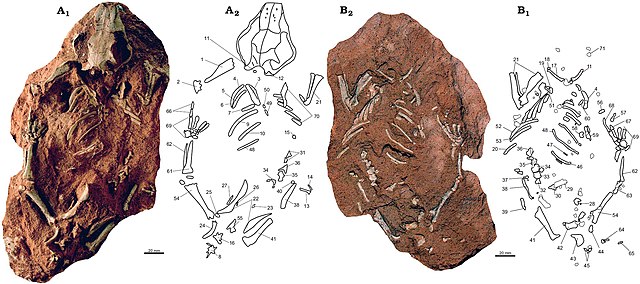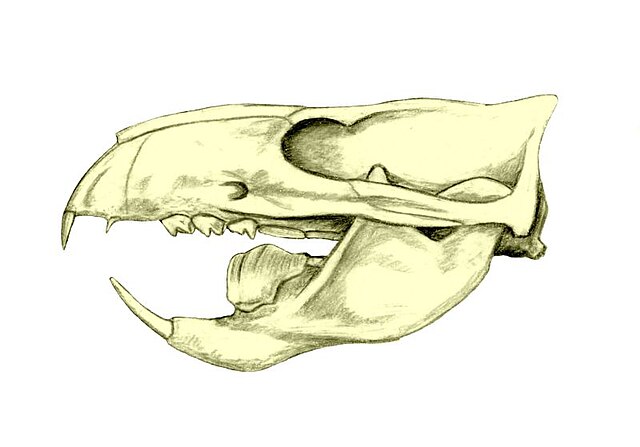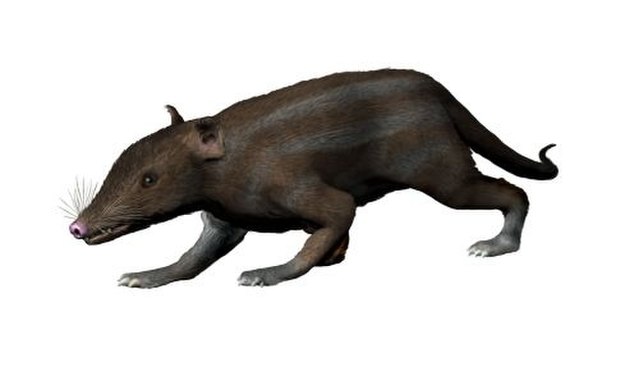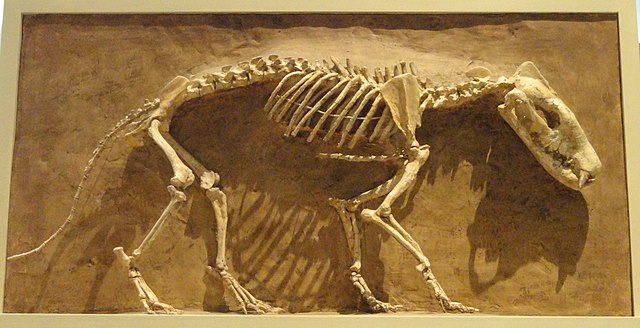Multituberculata is an extinct order of rodent-like mammals with a fossil record spanning over 130 million years. They first appeared in the Middle Jurassic, and reached a peak diversity during the Late Cretaceous and Paleocene. They eventually declined from the mid-Paleocene onwards, disappearing from the known fossil record in the late Eocene. They are the most diverse order of Mesozoic mammals with more than 200 species known, ranging from mouse-sized to beaver-sized. These species occupied a diversity of ecological niches, ranging from burrow-dwelling to squirrel-like arborealism to jerboa-like hoppers. Multituberculates are usually placed as crown mammals outside either of the two main groups of living mammals—Theria, including placentals and marsupials, and Monotremata—but usually as closer to Theria than to monotremes. They are considered to be closely related to Euharamiyida and Gondwanatheria as part of Allotheria.
Multituberculata
Restoration of Taeniolabis, the largest multituberculate at approximately 22 kg (49 lb).
Skull of Ptilodus. Notice the massive blade-like lower premolar.
Lower jaws and teeth of allodontid multituberculates
A mammal is a vertebrate animal of the class Mammalia. Mammals are characterized by the presence of milk-producing mammary glands for feeding their young, a neocortex region of the brain, fur or hair, and three middle ear bones. These characteristics distinguish them from reptiles and birds, from which their ancestors diverged in the Carboniferous Period over 300 million years ago. Around 6,400 extant species of mammals have been described and divided into 29 orders.
Restoration of Juramaia sinensis, the oldest-known Eutherian (160 mya)
Fossil of Thrinaxodon at the National Museum of Natural History
Hyaenodon horridus, a North American species of hypercarnivore within the now-extinct order Hyaenodonta, at the Royal Ontario Museum. The genus Hyaenodon was amongst the most successful mammals of the late Eocene-early Miocene epochs spanning for most of the Paleogene and some of the Neogene periods, undergoing many endemic radiations in North America, Europe, and Asia.
Sexual dimorphism in aurochs, the extinct wild ancestor of cattle








